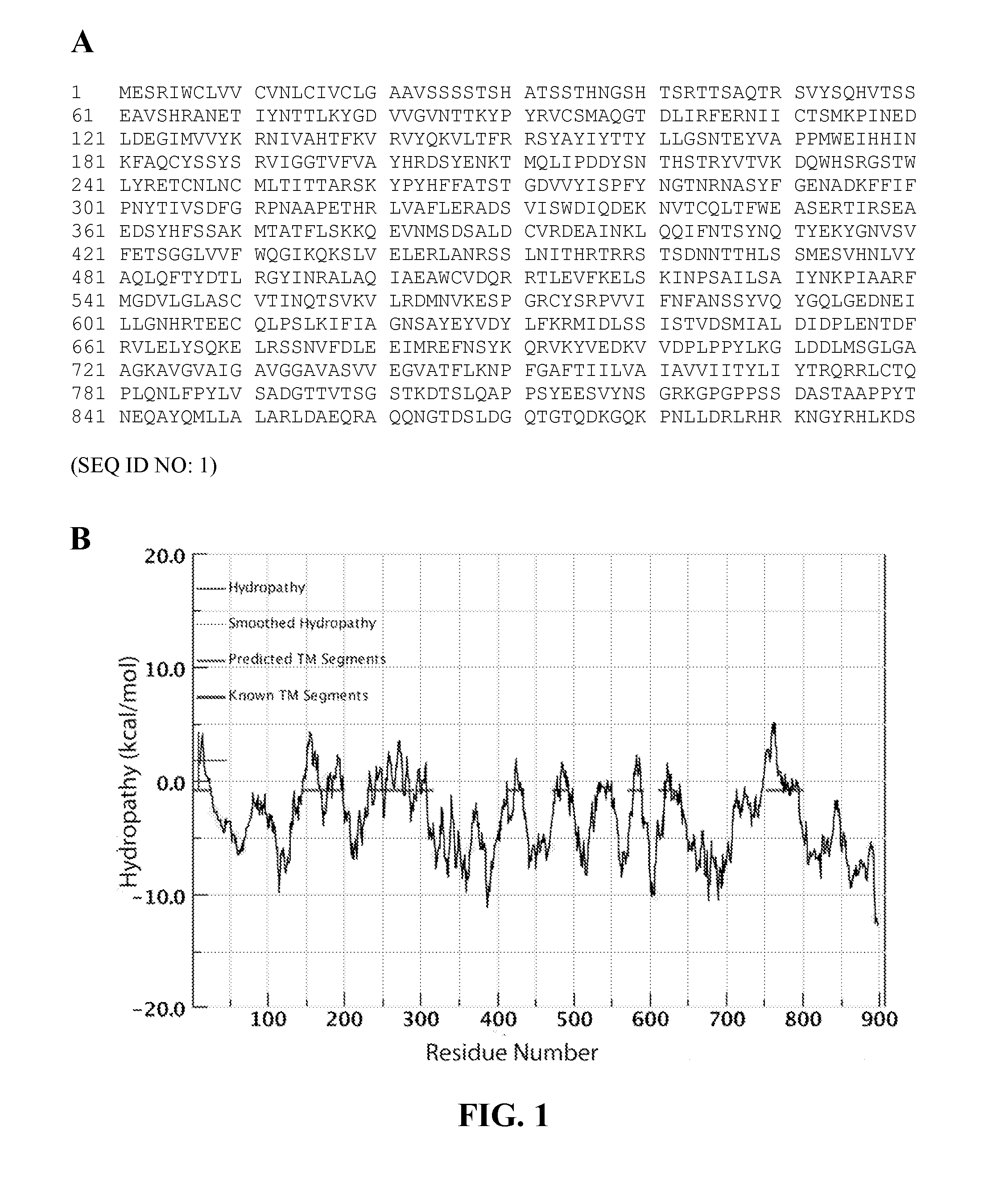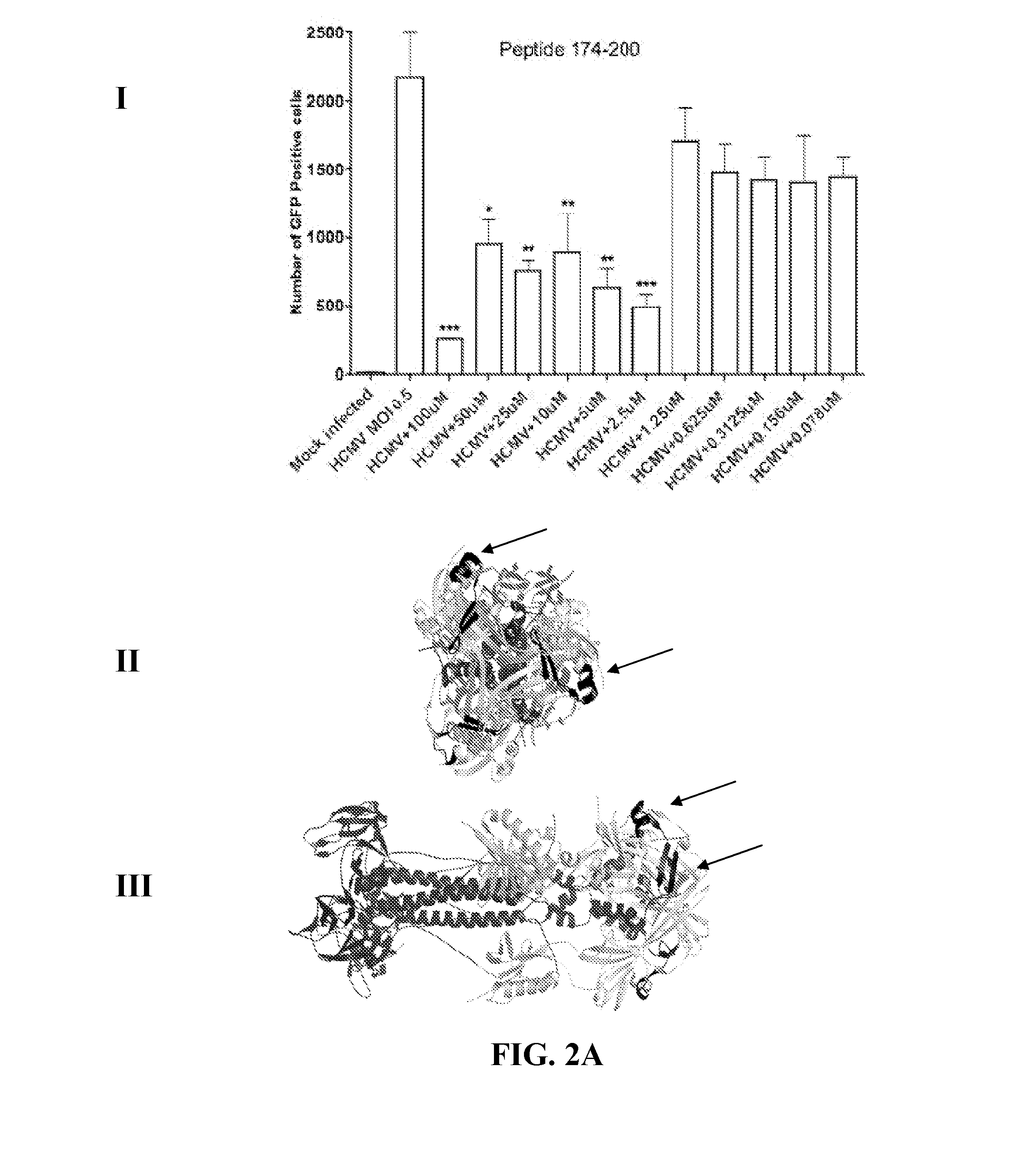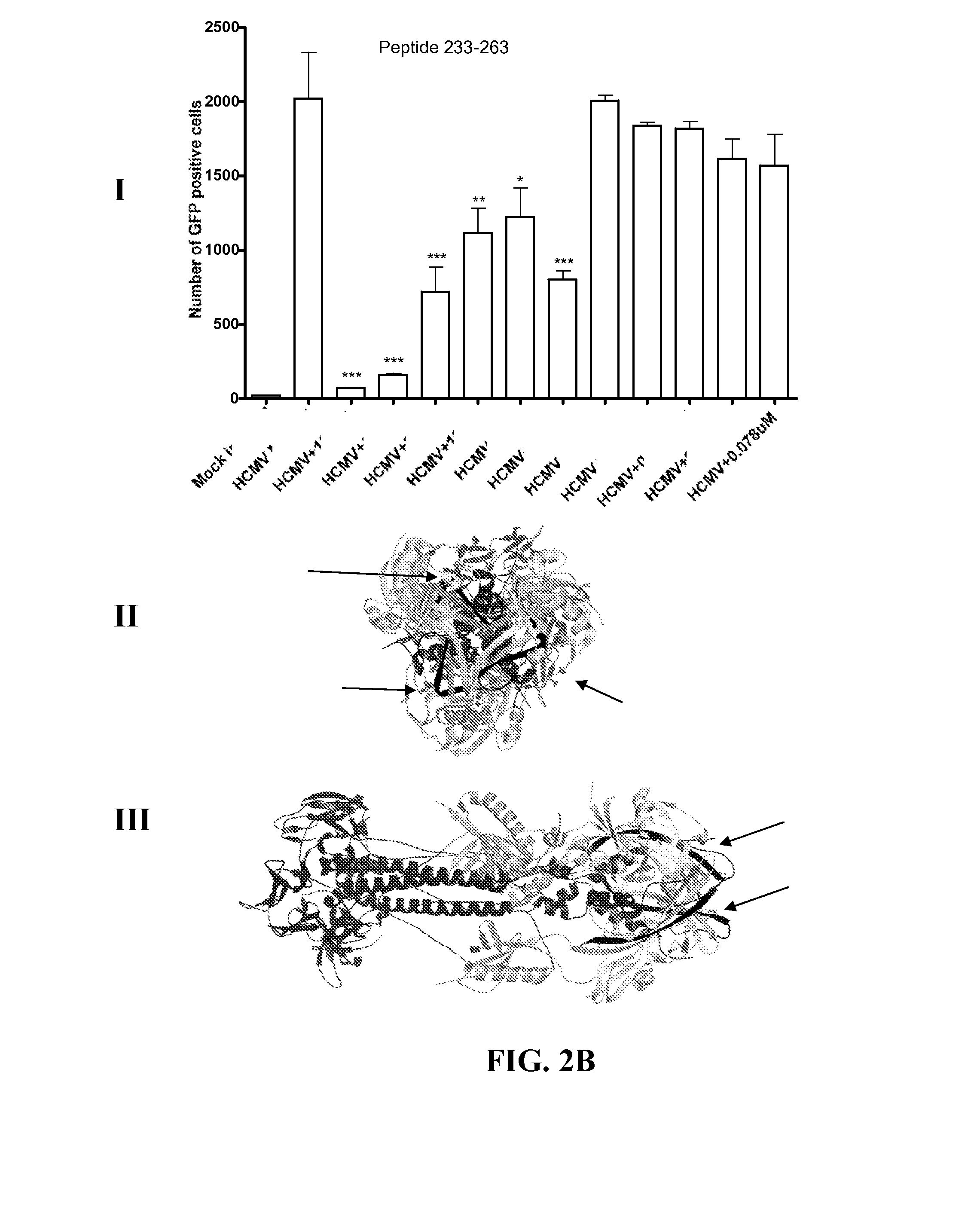Peptide compositions and methods for inhibiting herpesvirus infection
a technology of peptide compositions and compositions, applied in the direction of peptide sources, antibody medical ingredients, dsdna viruses, etc., can solve the problems of complex entry of herpesviruses into host cells and still poorly understood, so as to reduce the risk of developing sensorineural hearing loss, reduce the spread of herpesvirus, and reduce the viral load of pregnant women.
- Summary
- Abstract
- Description
- Claims
- Application Information
AI Technical Summary
Benefits of technology
Problems solved by technology
Method used
Image
Examples
example 1
Design and Synthesis of Peptides
Viruses and Cells.
[0062]The Towne strain of HCMV containing the Green Fluorescent Protein (GFP) expression cassette was obtained from Dr. Dan Streblow at the Oregon Health Science University and was propagated in human foreskin fibroblast (HFF) cells. Viral supernatants were collected, centrifuged to clear cell debris, and filtered through a 0.45 μm filter. HFF cells were grown in Dulbecco's modified Eagle medium (DMEM) supplemented with 10% fetal bovine serum (FBS), penicillin G (100 U / mL), streptomycin (100 mg / mL), and GLUTAMAX™ L-glutamine supplement (2 mM) from Invitrogen.
[0063]As described above, the Wimley White Interfacial Hydrophobicity Scale (WWIHS) identifies segments of proteins that prefer a transbilayer helix conformation to an unfolded interfacial location. WWIHS is an experimentally determined algorithm that can be used to estimate the propensity of amino acid sequence to interact with lipid membrane interface (55). Version 3.0 of the I...
example 2
Peptide Inhibition of Viral Infection
[0065]Human foreskin fibroblasts were seeded at the density of about 3.5×105 cells in each well of a 24-well plate about 24 hours prior to infection. The HFF cells were washed with 1×DPBS, and mock or virus infected for about 90 minutes at room temperature (RT) with the Towne GFP strain of HCMV at about 0.5 multiplicity of infection (MOI), preincubated with a range of concentrations of inhibitory peptides at about 37° C. for about 90 minutes. After the infection, virus mixture was removed and 10% FBS complete DMEM was added to each well and cells were incubated at about 37° C. for about 48 hours. GFP positive cells were visualized about 48 hours post infection by fluorescence microscopy and then quantified using flow cytometry. Results are shown in FIGS. 2A-2D, 3A, and 3B (Panel I of each figure), where significant reductions in the number of GFP positive cells compared to HCMV infected cells are denoted by a *(p<0.05), **(p<0.01), and ***(p<0.00...
example 3
Inhibition of HCMV Strain TRpMIA
[0084]In order to assess the ability of the peptides of the present invention to inhibit a clinically significant HCMV (HCMV TRpMIA), Peptide 174-200 (SEQ ID NO:3), Peptide 233-263 (SEQ ID NO: 4), and Peptide 264-291 (SEQ ID NO: 5), were tested for inhibition of HCMV TRpMIA infection of HFF cells under the assay conditions similar to these described in Example 2 for the Towne strain of HCMV, above. In particular, HFF cells were plated in 96-well plates at a density of about 10,000 cells-per-well about 24 hours post infection. Individual inhibitory peptides were evaluated against 0.5 MOI HCMV TRpMIA preincubated with various concentrations in the range of about 0.078 micromolar to about 100 micromolar. The results obtained from these assays are shown in FIG. 13, FIG. 14, and FIG. 15 for Peptide 174-200, Peptide 233-263, and Peptide 264-291, respectively. The degree of HCMV infection was determined by evaluating the number of cells expressing immediate-...
PUM
| Property | Measurement | Unit |
|---|---|---|
| pH | aaaaa | aaaaa |
| v/v | aaaaa | aaaaa |
| temperature | aaaaa | aaaaa |
Abstract
Description
Claims
Application Information
 Login to View More
Login to View More - R&D
- Intellectual Property
- Life Sciences
- Materials
- Tech Scout
- Unparalleled Data Quality
- Higher Quality Content
- 60% Fewer Hallucinations
Browse by: Latest US Patents, China's latest patents, Technical Efficacy Thesaurus, Application Domain, Technology Topic, Popular Technical Reports.
© 2025 PatSnap. All rights reserved.Legal|Privacy policy|Modern Slavery Act Transparency Statement|Sitemap|About US| Contact US: help@patsnap.com



